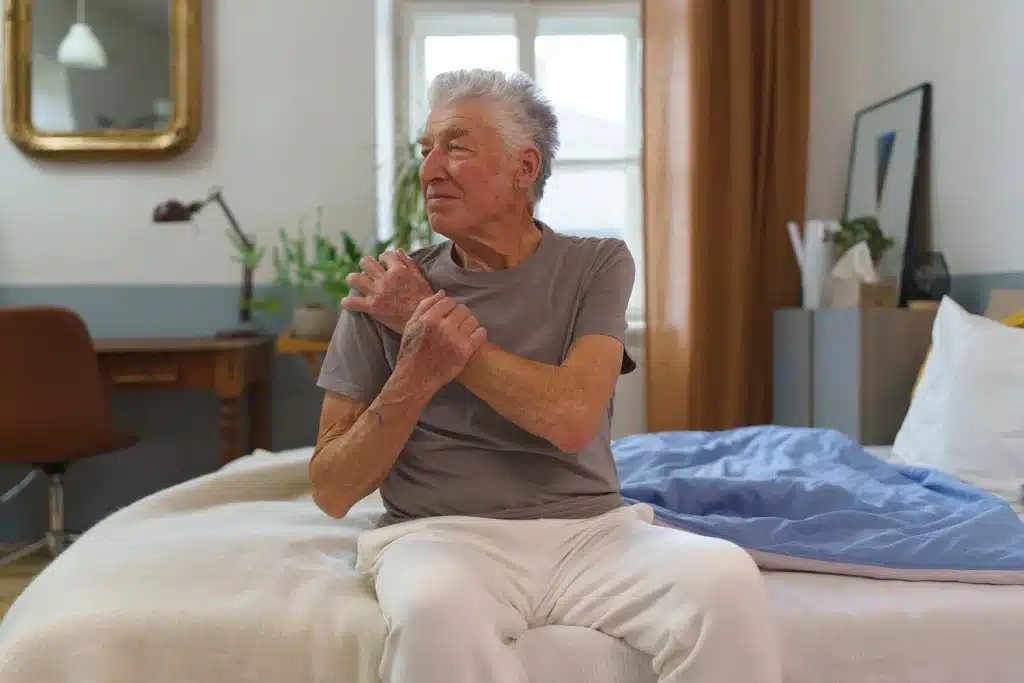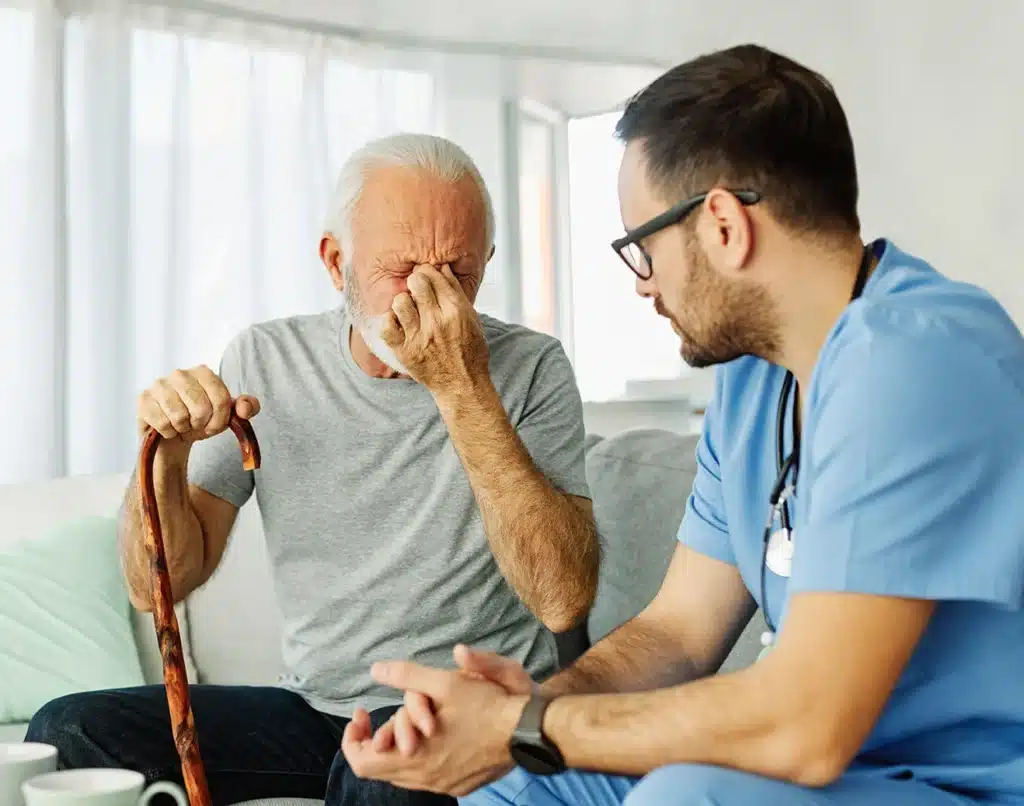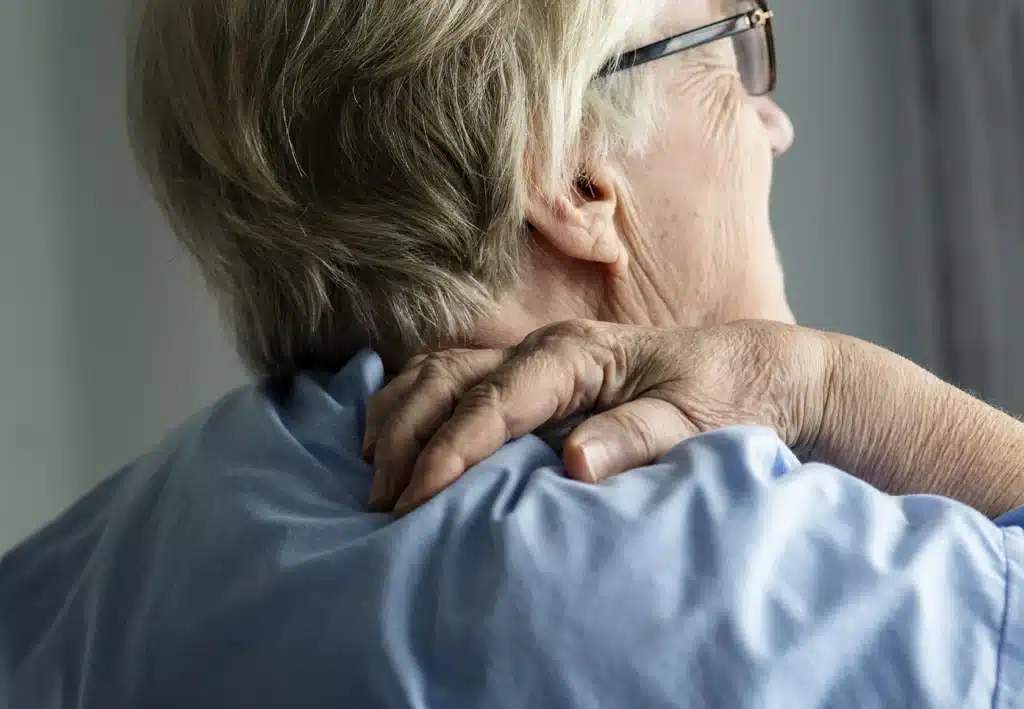
Table of Contents
ToggleWithin the vast spectrum of human experiences, pain uniquely resides as a shared yet deeply personal reality. This sensation, whether fleeting or stubbornly persistent, can substantially alter our quality of life.
This issue becomes even more pressing when it comes to managing pain among our aging population. In this article, we endeavor to furnish a comprehensive guide that illuminates the complexities, strategies, and innovative developments in the field of pain management, with a dedicated emphasis on elderly care.
As the old adage goes, understanding the problem is half the solution. Pain, particularly in chronic form, is a multifaceted medical condition.
Chronic pain is a persistent discomfort that lasts longer than six months, lingering even when the original injury or disease has healed. But pain transcends the mere realm of physical distress, morphing into a complex blend of emotional turmoil and social disconnection.
Unmanaged pain can significantly impact everyday life. It can limit mobility, precipitate mental health conditions such as depression, and diminish overall quality of life.
For elderly individuals who may already be battling multiple health conditions, the burden of pain can be especially profound, often triggering a rapid deterioration of health and well-being.
The necessity of pain management is undisputed. In the realm of geriatric health, its importance multiplies manifold.
Effective pain management can not only decrease physical symptoms but also significantly enhance emotional and social well-being for our older adults.
Pain management in geriatric and palliative care emphasizes helping individuals maintain their functionality and independence as much as possible.
Thus, pain management for the elderly is not just about reducing pain—it’s about improving life quality, increasing social interactions, and fostering a sense of purpose.
As is the case with many medical conditions, pain management deploys a diverse assortment of techniques, extending from conventional methods to alternative and complementary therapies.
Conventional methods frequently comprise medications such as readily available over-the-counter pain relievers, opioids, and nonsteroidal anti-inflammatory drugs.
Various forms of physical therapies, including massage, heat and cold applications, and structured exercise programs, are also widely used. These techniques can significantly assuage pain and enhance life quality for older adults.
On the other hand, alternative and complementary therapies offer a different but equally valuable approach to pain management.
Modalities such as yoga, meditation, acupuncture, and even art therapy have demonstrated notable potential in managing pain, particularly in its chronic form.
These therapies can assist older adults in discovering fresh avenues of coping with pain and may even enable a reduction in their reliance on medications.

The essence of pain management lies in its multidisciplinary approach, necessitating a cohesive team of dedicated healthcare professionals to provide the best care.
A myriad of professionals, from physicians and nurses to physical therapists, psychologists, and social workers, all have a critical role to play in managing an older adult’s pain.
In this collaborative process, communication stands as a cornerstone. It is crucial for providers to comprehend the patient’s experience of pain, the repercussions it has on their life, and their personal goals for managing it.
Similarly, patients need to be well-informed about their available treatment options, the potential side effects, and effective strategies for self-management.
This exchange of information fosters the development of individualized, efficacious pain management plans that honor the patient’s preferences and aim to enhance their quality of life.
Modern medicine is akin to a river, always flowing and introducing refreshing currents of progress and improvements.
These advancements are like lifeboats in the stormy sea of pain, offering hope and relief to those in need. From crafting more potent and safer medications to honing physical therapy techniques, we are continuously finding better ways to ease pain.
And let’s not forget the incredible fusion of technology and medicine! Can you imagine virtual reality being a part of pain management? Well, it’s not science fiction anymore—it’s our reality.
Thanks to tireless research and progress, we’re gaining ground in our battle against pain, particularly in providing relief for our elderly loved ones. It’s a testament to human resilience and ingenuity—no matter the challenge, we always find a way to rise above it.

Managing pain, especially among the elderly, is not just about minimizing discomfort—it’s about enhancing their quality of life, promoting their independence, and ensuring they feel heard and cared for.
It’s about acknowledging the individual behind the pain, recognizing their needs, and providing a holistic approach that takes into account not just their physical well-being, but their emotional and social health as well.
Effective pain management can empower our elderly loved ones, allowing them to reclaim the joys of life that pain may have momentarily eclipsed. It involves a careful balance of medical expertise, innovative techniques, and a deep-rooted compassion that recognizes the intrinsic dignity and worth of each individual.
Ultimately, pain management in the elderly is a journey towards comfort, autonomy, and the highest possible quality of life. It’s a testament to the human spirit’s resilience and our unyielding commitment to care for each other, particularly those most in need.
GET IN TOUCH +
285 Sills Road
Building 5-6, Suite E
East Patchogue, NY 11772
(631) 475-5511
184 N. Belle Mead Road
East Setauket, NY 11733
(631) 675-6226
GET IN TOUCH +
285 Sills Road
Building 5-6, Suite E
East Patchogue, NY 11772
(631) 475-5511
184 N. Belle Mead Road
East Setauket, NY 11733
(631) 675-6226
SUBSCRIBE TO OUR NEWSLETTER +
Send us a Google review. Click this link and let us know how we did!
Review us on Yelp too.